11 spring-flowering plants guaranteed to add joy and uplifting color to your yard
Celebrate the season with these expert planting picks for spring


What better way to celebrate the arrival of warmer weather than to grow masses of spring-flowering plants in your backyard? After the quiet months of winter, their bright colors, wildlife-friendly benefits, and in some cases, their delicate scent can bring new life to an outdoor space – and there are plenty to choose from.
Spring flowers can be enjoyed no matter the size of your plot, and as global temperatures are increasing, many of these can even be seen emerging in late winter, heralding the changing seasons. Some are ideal for cheerful containers on a deck, patio, or even a window sill, while others make excellent additions to spring garden ideas and seasonal flower beds. Most make wonderful cut flowers too, to bring that sense of sunshine indoors.
I asked plant experts for some of their favorites, and alongside some of my own, curated a list of 10 of the best for color, texture and even scent.
Welcome the changing seasons with these 10 spring flowers
From ground-cover plants perfect for woodland schemes to flowering shrubs, give your garden a dose of spring cheer with these choices.
1. Tulips

- Height: 6in-2ft
- Spread: 4-6 inches
- Hardiness: USDA 3-7
- Best for: Spring bulbs
There are lots of beautiful spring-flowering bulbs, but for me, tulips take the crown. They dazzle with their myriad of colors and forms, from vibrant double-bloomers such as 'Backpacker' from Burpee, to the slender, elegant shapes of 'Clear Water' (also available from Burpee).
They like plenty of sun and well-drained soil. Plant tulips in late fall – which is later than most other spring-flowering bulbs – to avoid tulip fire disease.
They can work well in borders, but are also a favorite for pots, you can also work bonemeal into the compost before planting, as it breaks down into root-promoting phosphates over winter and nourishes growth in spring.
Design expertise in your inbox – from inspiring decorating ideas and beautiful celebrity homes to practical gardening advice and shopping round-ups.
2. Daylilies

- Height: 6in-5ft
- Spread: 2-4ft
- Hardiness: USDA 4-11
- Best for: Low-maintenance perennial
Rachel Bull, head of gardens at Homes & Gardens, says that some of her go-tos for spring-flowering plants are early varieties of daylily.
'They are amazing value blooms. In my experience they thrive just as well in heavy clay as they do in dry and sandy soils, giving beautiful yellow or orange blooms,' she says.
As spring perennials, you don’t have to keep replanting them every year, Rachel adds. 'The root systems on these plants grow stronger as the seasons go by, in fact they can need controlling and containing by dividing the plants every few years so that they don't take over.'
3. Vernal witch hazel
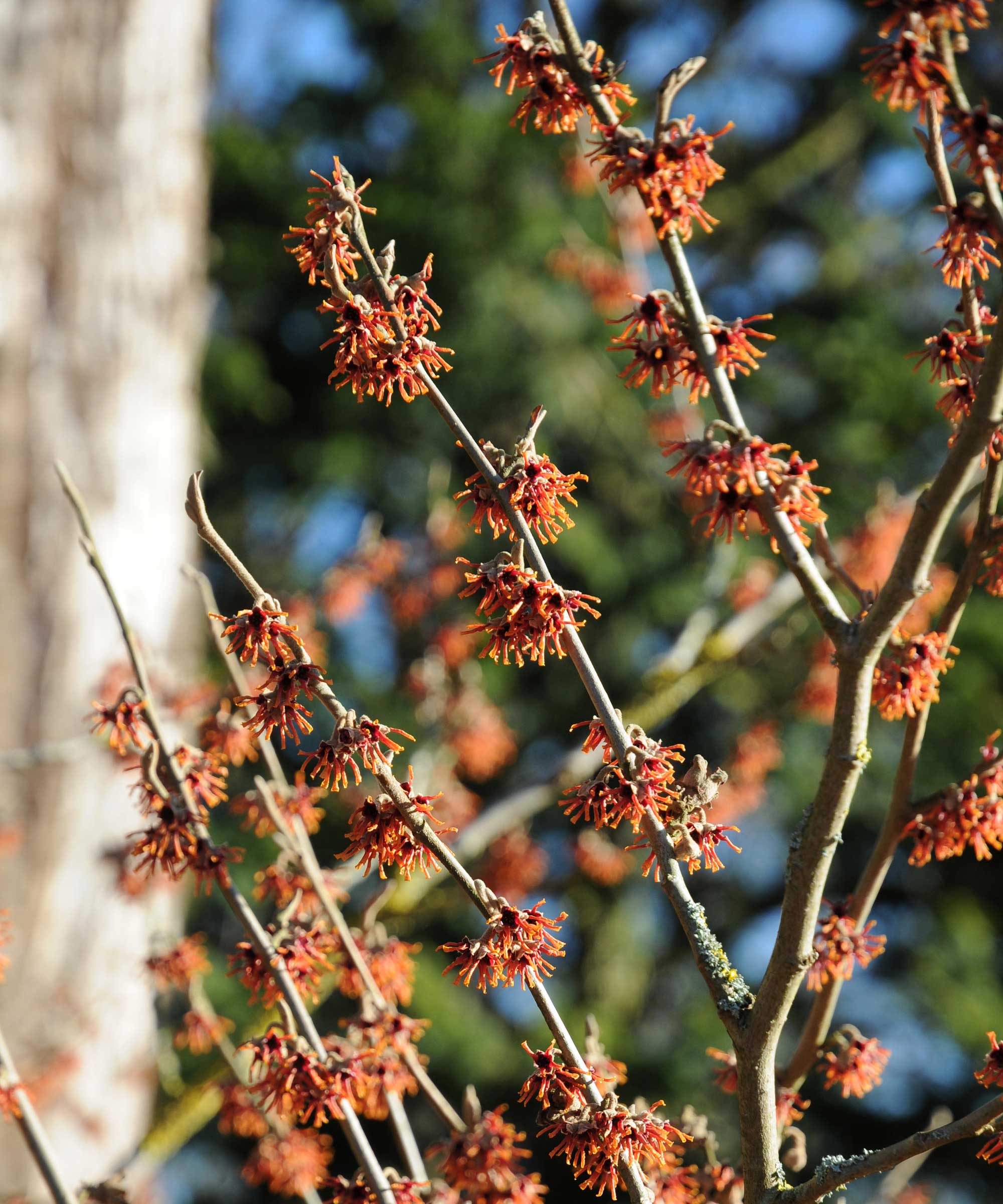
- Height: 6-10ft
- Spread: 10ft
- Hardiness: USDA 4-8
- Best for: Fragrant flowers
Matthew Morrow from NYC Parks chooses vernal witch hazel (Hamamelis vernalis) as one of his favorite spring-flowering plants.
'The word "vernal" means "of, or appropriate to spring” and sums up the flowering habit of this 6- to 10-foot, multi-stemmed understory tree or shrub,' he explains.
'It flowers in early spring anywhere between January and early March and is showy for three or so weeks. The flowers themselves are made up of three to four strap-like petals and are fragrant to a degree. On very cold days, the petals do what I wish I could do and roll themselves up into tight little formations to stay snug and warm. Cute – but not only cute, as this adaptive measure extends the bloom time of the plant.
'The colors can range from yellow to orange to copper to red,' he continues. 'The leaves of witch hazel are also a fine golden-yellow in the fall, adding greatly to the effectiveness of the shrub.'

Matthew is the Director of Horticulture for Environment & Planning, a division of the New York City Park's Department. In this role, he works to support horticulture, gardens and the gardeners of the agency, as well as the various native flora and fauna of New York City.
4. Butterfly weed
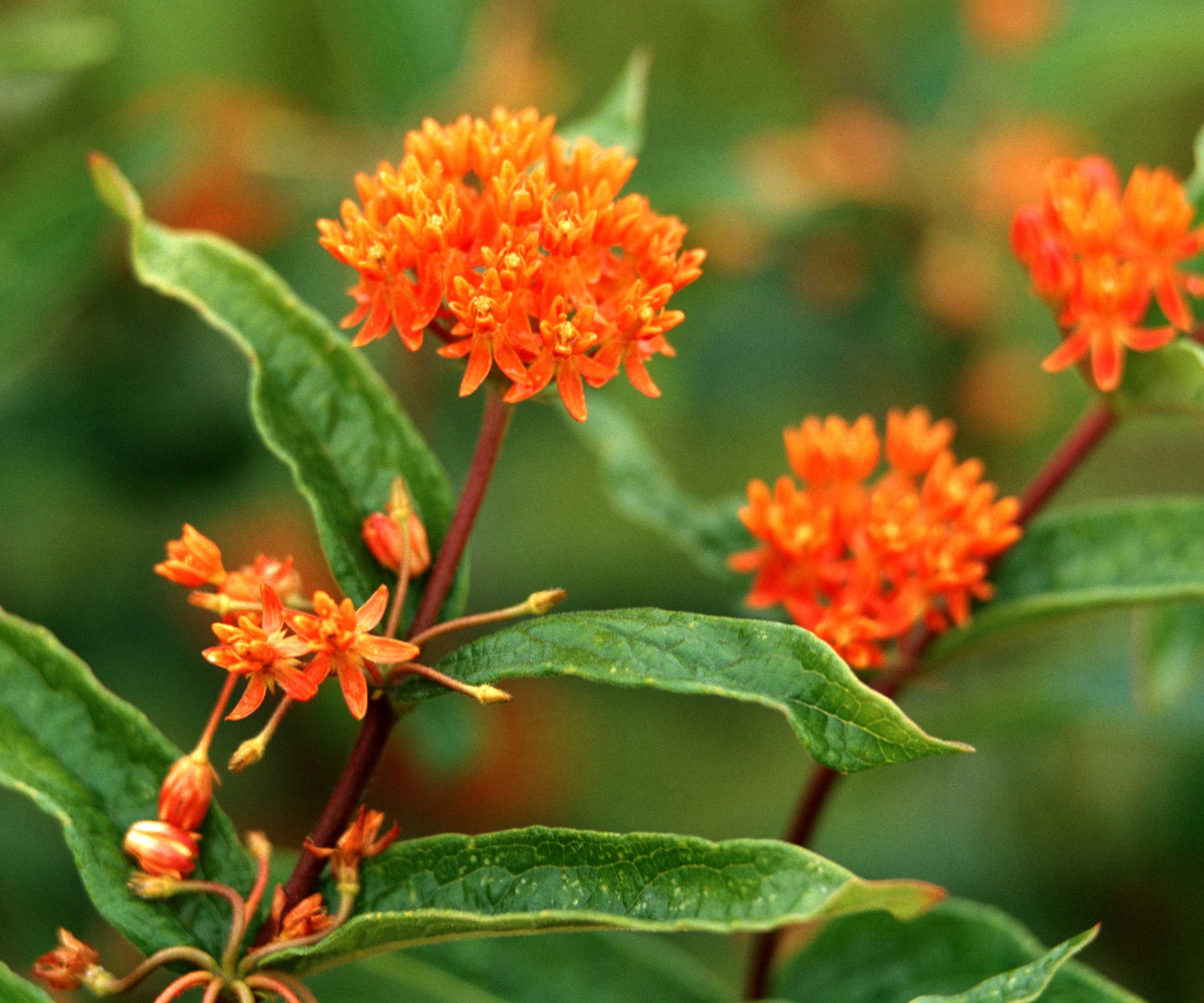
- Height: 2-3ft
- Spread: 1-2ft
- Hardiness: USDA 3-9
- Best for: Pollinators
Wyatt Shell and David Levine are the Co-founders of My Home Park. They guide homeowners to restore habitats for pollinators and birds while beautifying their yards using all native plants.
'Butterfly weed (Asclepias tuberosa) offers a brilliant mid to late-spring show of vibrant orange blooms that will light up your garden,' they explain. 'This easy-to-grow perennial enjoys full sun and dry soils, grows to between just 1-2ft tall, and will thrive with little maintenance within its native range across much of the Central and Eastern United States.
'As its name suggests, butterfly weed will not only brighten up your flower bed, it will support many species of pollinators as well. As this is a species of milkweed, it will also support the endangered monarch butterfly which relies on this plant to feed its caterpillars,' they continue.
'To grow butterfly weed from seed, sow in the fall while the soil is still warm and gently stomp the seeds down into the soil. Alternatively, it can be easily grown from starter plants, which better allow for specific placement in your garden bed.'
These spring-flowering plants benefit from being drought-resistant – 'water sparingly until established and then allow the plant to brave the elements,' says Wyatt and David. They are deer-resistant, too. You can buy the plants from Nature Hills.
5. Primroses

- Height: 6in
- Spread: 6-18in
- Hardiness: USDA 4-8
- Best for: Adding color to containers
'Primroses add a splash of dainty color to your spring flower beds, and if you plant them in an ideal spot, they can come back year after year,' says Erinn Witz, the Co-founder of SeedsandSpades.com.
'Choose an area that gets partial shade and add lots of organic matter to the soil before planting your primroses,' she advises. 'There are many species of primrose, with varieties that can tolerate quite a bit of cold to those that are more delicate. Make sure to choose a variety that’s suitable for your regional climate.'

Erinn is the co-founder of Seeds and Spades, an online resource that teaches people how to grow their own plants and create beautiful outdoor spaces.
6. Mayapple

- Height: 1-1.5ft
- Spread: 1ft
- Hardiness: USDA 3-8
- Best for: Ground-cover in woodland planting schemes
Another of Matthew Morrow's favorite spring-flowering plants is Podophyllum peltatum – otherwise known as mayapple.
'These shade-loving Northeastern native ground-cover plants have large, umbrella-like leaves that give an interesting texture to a shaded garden floor,' he says. They work well for woodland garden schemes.
'Though the single white bloom produced between these two leaves shows itself closer to May, the leaves begin their show in late March or April.
'This rhizomatous plant will populate a partial shade to shade area with gusto,' Matthew continues. 'However, as an ephemeral plant, it will die back in the summer, leaving space for companion plants like Solomon's seal, fern, or carex species.'
If you're looking for more blooms, hellebores also do well in shade, and come in a variety of hues.
7. Ranunculus
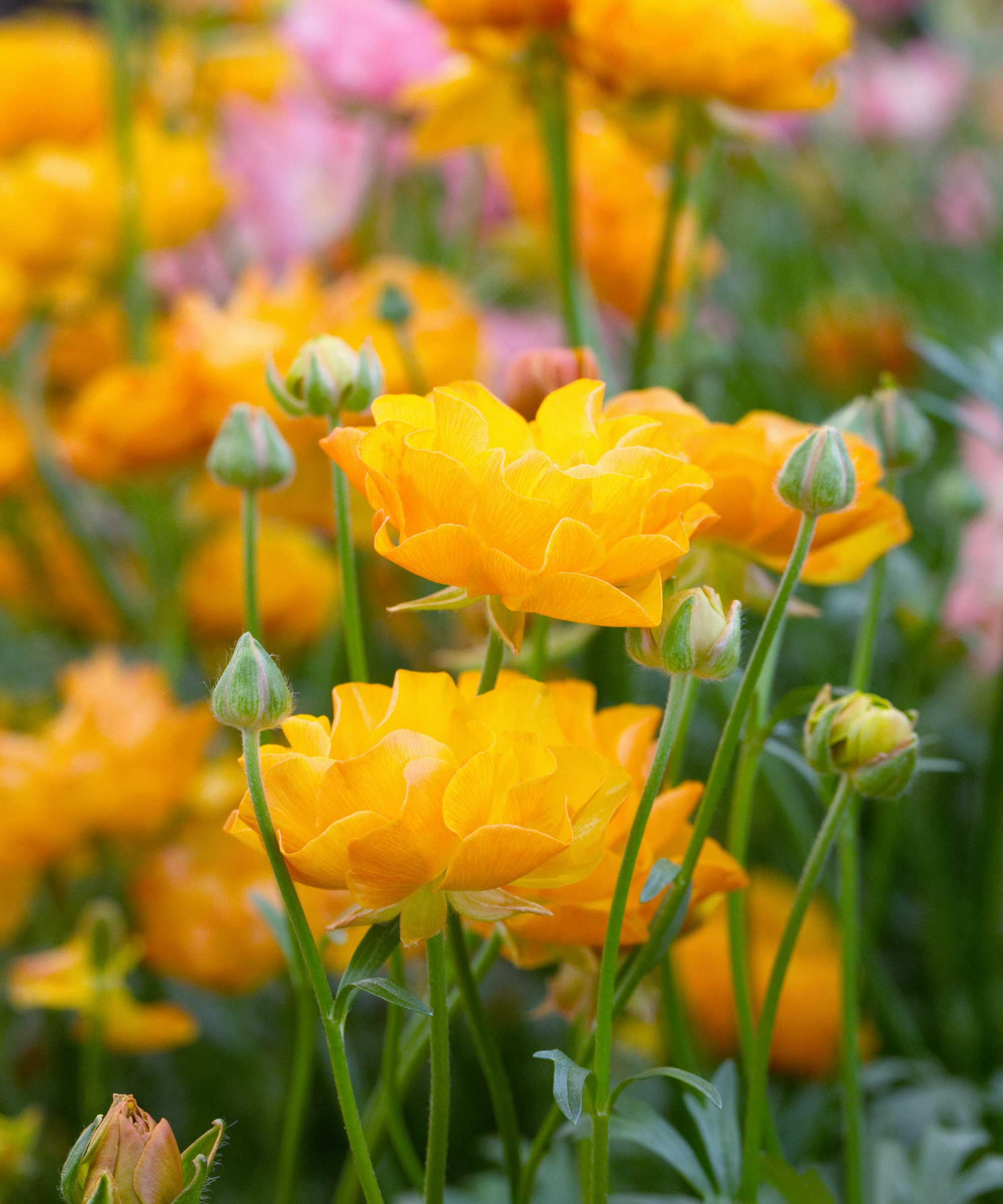
- Height: 8-18in
- Spread: 6-12in
- Hardiness: USDA 8-10
- Best for: Cutting garden flowers
With their layers of frilly petals and bright candy-like shades, ranunculus are lovely for containers, flower beds, or the cutting garden.
If your region is warm enough (hardiness zones 8-10), plant the corms in fall for spring blooms. Otherwise, they can be planted in late winter to early spring under cover – flowers will appear around 90 days later. Ensure the soil is well-draining and they get plenty of sun. You can find a gorgeous, pastel mix of ranunculus at Burpee.
They are great plants for pollinators. Deadhead them as the blooms fade.
8. Forsythia
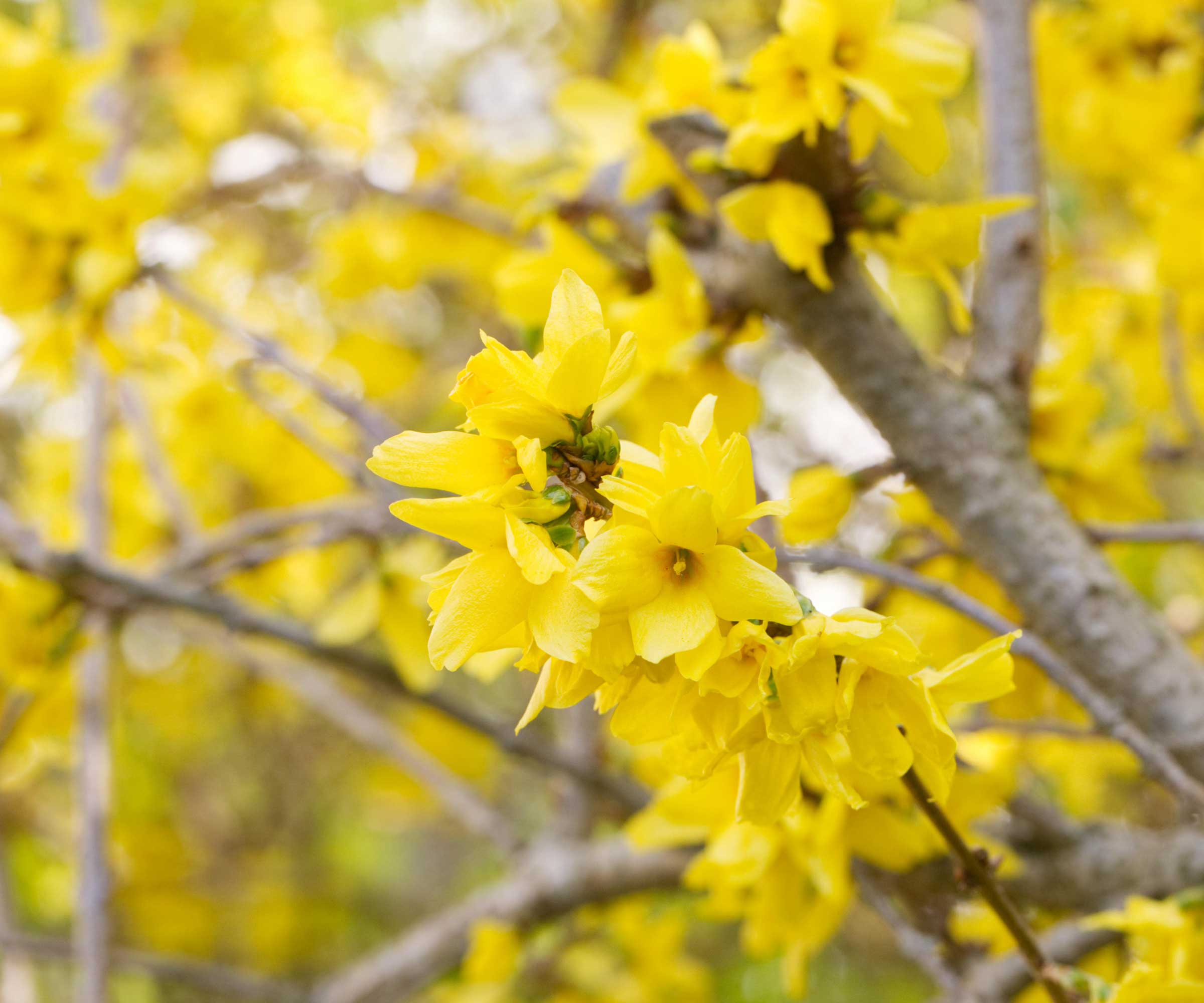
- Height: 3-8ft
- Spread: 4-12ft
- Hardiness: USDA 5-9
- Best for: Prolific flowers
Well-loved for their glorious explosion of sunshine-yellow blooms, these fast-growing shrubs – are guaranteed to liven up the springtime yard.
With various varieties to choose from, they can be grown as hedging plants or as solo specimens, and are easy to care for. They like moist but well-draining soil, in sun or part shade.
Due to their rapid growth rate, pruning is needed to keep them neat and compact – although some gardeners prefer the wilder look. If you do decide to trim yours, it should be done after the spring flowers have finished.
You can find forsythia shrubs at Nature Hills.
9. Pansies
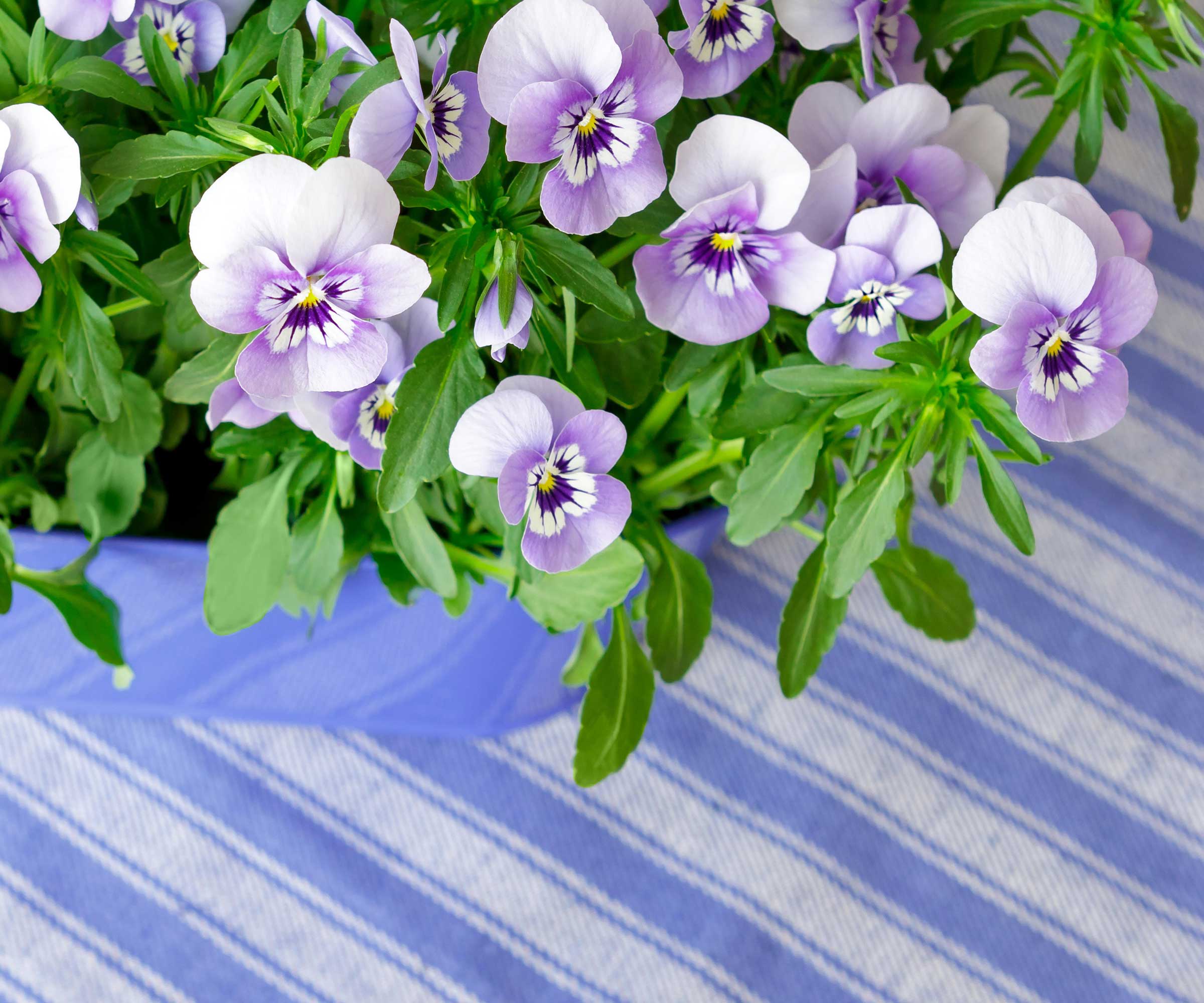
- Height: 6-9in
- Spread: 9-12in
- Hardiness: USDA 7-10
- Best for: Spring window boxes and hanging baskets
'Pansies come in a gorgeous color array that can add a bold touch to the usual soft spring shades,' says Erinn Witz. They are an especially good choice for colder climates – pansies can withstand frost and even a light snow, she adds. They make pretty additions to spring window boxes.
'Pansies are excellent container plants, though they can grow happily in the ground as well. Plant your pansies in well-draining soil, and water often enough to keep the soil consistently moist. Pinch off spent blooms to keep your plants producing fresh blossoms all spring.'
A good range is available from Burpee.
10. Columbine
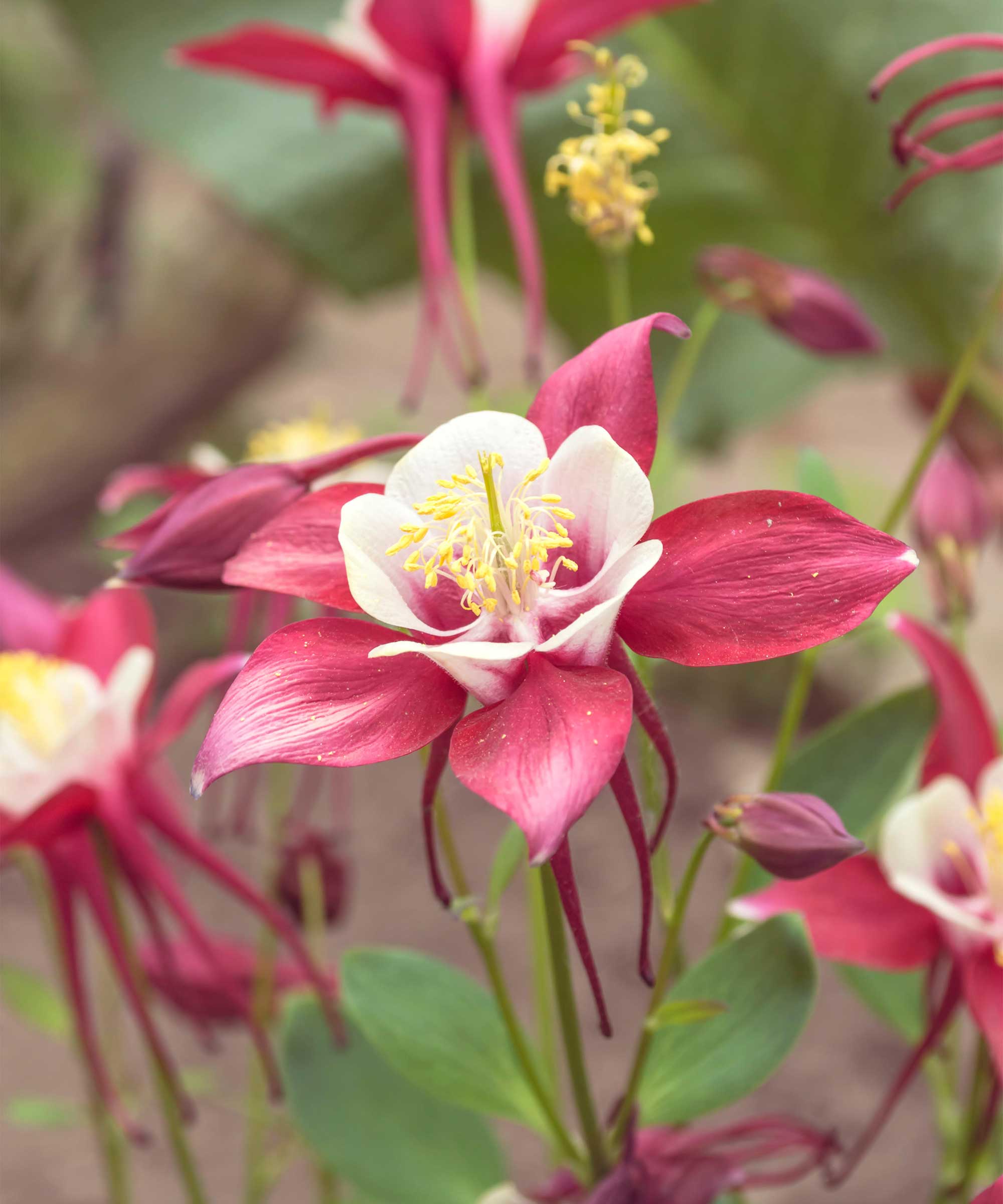
- Height: 6-12in
- Spread: 6-24in
- Hardiness: USDA 3-8
- Best for: Intricate flowers
These spring perennials, also known as aquilegia, do best with morning sun and afternoon shade, and prefer well-draining soil. They're good for pollinators, and slot in well with a cottage garden planting scheme.
Rachel Bull says columbine are a staple in her cutting garden. 'I've grown aquilegia - I also fondly call it granny's bonnet -
'These lovely plants come in various shades, including lavender and a pink-yellow mix,' says Erinn. 'Columbine produces dainty flowers that bloom at the tips of thin stalks, so they’re perfect for adding some height to your spring garden.'

Rachel is a gardening writer, flower grower and floral designer. After more than a decade writing for and editing a range of consumer, business and special interest titles, Rachel became editor of floral art magazine The Flower Arranger. She then trained and worked professionally as a floral designer and stylist for six years. She joined the Homes & Gardens team in 2023. An expert in growing cut flowers, she is particularly interested in sustainable gardening methods and growing flowers and herbs for wellbeing.
11. Trillium
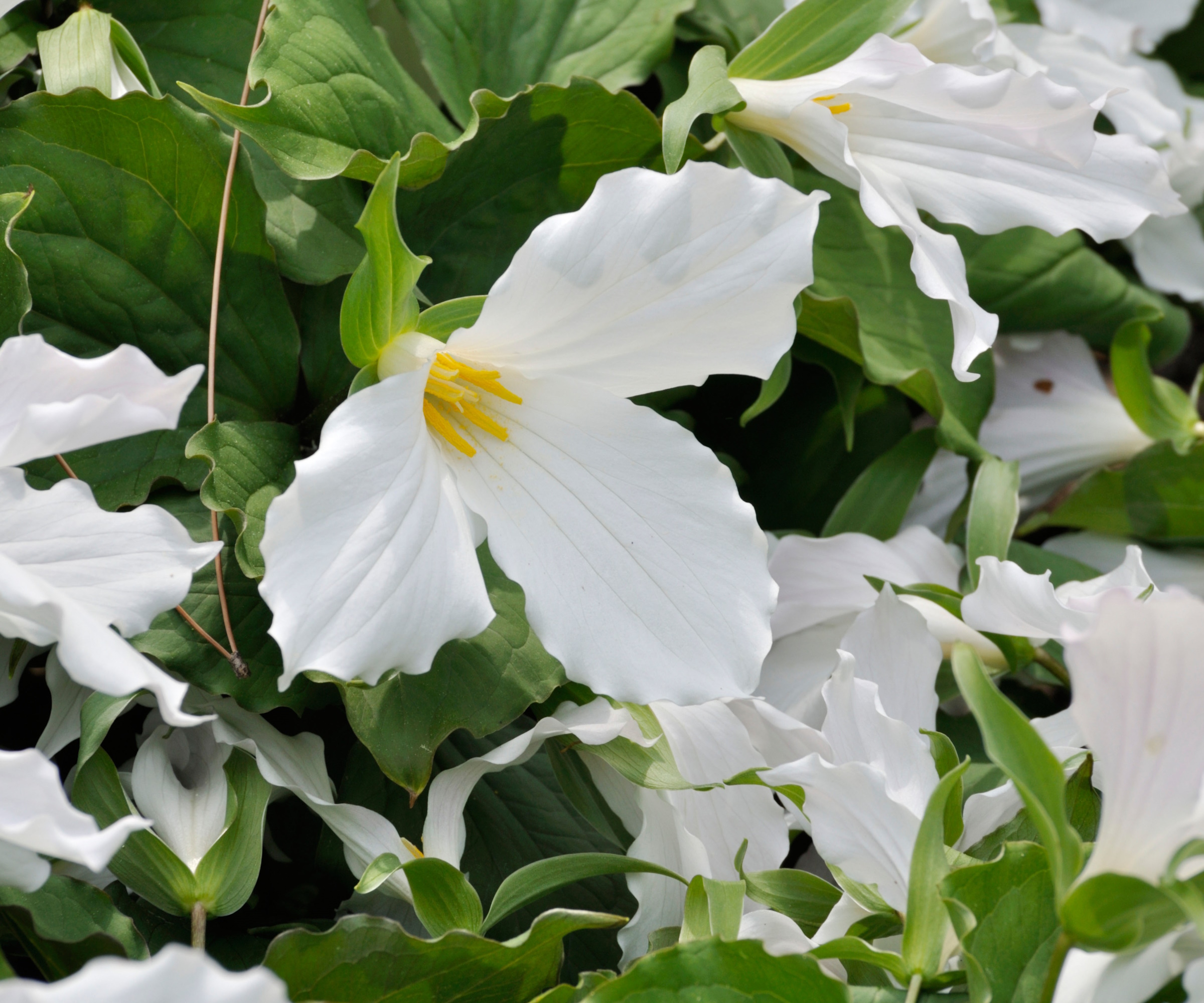
- Height: 4-7in
- Spread: 12-20in
- Hardiness: USDA 4-9
- Best for: Shaded spots
Trillium, with its elegant, three-petaled blooms and graceful foliage, is a cherished addition to woodland gardens. Native to North America, these perennial plants thrive in the cool, shaded environments of forested areas, making them perfect for a naturalistic garden.
Plant trillium under trees, or anywhere with dappled sunlight or partial shade. Trillium prefer rich, well-drained soil that is slightly acidic, with plenty of organic matter.
Over time, trillium will form delicate colonies that can enhance the darker and shadier spots. In early spring, they’ll begin to bloom in shades of white, pink, or red, adding a touch of quiet elegance to your garden’s landscape.
The list of stunning flowers that will bloom in spring is so much bigger than our expert curation, so if this has inspired you to get planting, and you want to give some added color to your patio or window boxes, you might enjoy finding out about the best spring flowers for pots.

Holly started writing about gardening five years ago, and she is a regular contributor to Homes & Gardens. She has also written many gardening features for Woman & Home and Real Homes, too. She has previous experience as a professional gardener, where she helped to plant and maintain private gardens. Holly has also looked after allotment plots over the years and loves to grow her own flowers and veggies from seed. In her spare time, she enjoys visiting local gardens, botanical drawing, and tending to her ever-growing collection of houseplants.